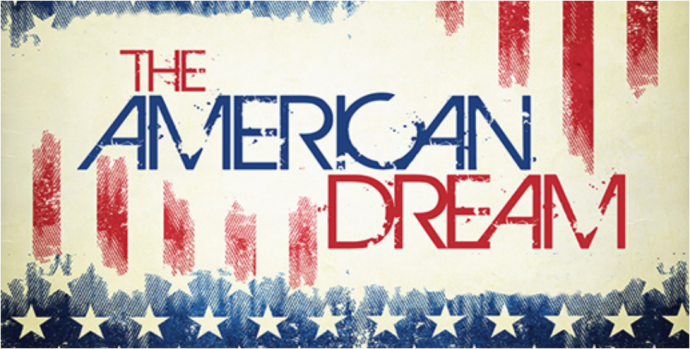In the last article, we outlined John Horvat’s argument that America’s economy cannot be solved merely by bringing back jobs from overseas, but rather, “America faces a grave moral crisis that needs to be addressed.”
Then we introduced former manufacturing company owner John Westberg, who not only understands our county’s moral challenge, but also has some ideas on how we can bolster American manufacturing and improve our country’s trade position to benefit American workers.
On the website of his foundation New Hope for America, Westberg provides both summary and details of what he is proposing:
The Problem
During the last 40 years, living the American dream became almost impossible for the working people of America because of the “outsourcing” of U.S. manufacturing. Observing this loss of good paying “middle class” jobs, Mr. Westberg established the NHFA foundation to find a solution to this problem.
The Solution
Through research he rediscovered the solution that Japan had used to rebuild their manufacturing base after the devastation of WW 2. Using this concept, they went on to become the No. 2 Economic Power in the world. NHFA suggests utilizing this same proven concept to restore U.S. Manufacturing. This, in turn, would create millions of new jobs, raise the wages of American workers, and restore a robust economy to the U.S.
Okay, how, exactly?
NHFA’s website is loaded with detailed policy papers outlining how policy makers can stop companies from importing from low-cost suppliers in China rather than purchasing from high-cost suppliers in America.
If our nation’s trade policy required that U.S. businesses could only import the type of products that they [manufacture], then your customers would no longer be able to import the type of products that you produce.
The Solution:
U.S. businesses can only import the types of products that they actually do manufacture . . .and . . .each manufacturer’s import percentage of their own sales would be limited to the current import penetration of that particular product market.
Got it? Don’t worry if your answer is “not yet.” Economics is called the dismal science for a reason. There is a lot more to Westberg’s pitch — you can find more of his argument on this page of NHFA’s website.
Another Illinois voice on the topic is Steve Rauschenberger, president of the Technology & Manufacturing Association (which is “a Schaumburg-based agency that acts as a comprehensive resource for Midwest manufacturers.”)
Celebrating “National Manufacturing Day,” Rauschenberger wants “to dispel misperceptions of American manufacturing.”
The folks who are involved daily in the industry know that there are three big manufacturing myths — that the U.S. manufacturing industry is in decline; that it is backbreaking work in a dark, dirty building; and that there is little future in a career in manufacturing.
In an article that recently ran in the Daily Herald, Rauschenberger writes that “Manufacturing in Illinois is strong and growing stronger.”
Manufacturing here has experienced a resurgence. As manufacturers have become leaner and more competitive globally, they have experienced tremendous growth.
“Free trade” has been a solid plank in the Republican National Committee’s Party Platform for decades, but candidate and now President Donald Trump has caused that plank to show some signs of weakening.
Without much of an effort over two years, I collected more than a hundred links to op eds, policy articles, and studies focusing on various aspects of the manufacturing/trade issue.
It isn’t as simple as just a debate between free traders and protectionists. Tax rates, regulations, tariffs, globalization, advancing technology, currency manipulation, poorly negotiated trade treaties, countries cheating on trade treaties, trade balance, and theft of intellectual property are all matters of controversy. As we saw last time, cultural issues and skilled labor are also in the mix.
In the next articles, I will only present an overview, linking and excerpting from only a handful of articles. At the conclusion, for anyone interested in drowning themselves in the subject, I’ll provide all the headlines and links I gathered.
To give you a flavor of what I collected, here are just a few that I won’t be quoting from:
Unfair Trade Hurts Ordinary Workers in Both China and the U.S.
By getting tough with Beijing, President Trump can make life better for American and Chinese citizens alike.
Free Trade As a General Rule
When in doubt, free trade is a safe bet.
Despite the Rhetoric, US Trade Deficit With China Is Not a Big Problem. Here’s Why.
In our capital account, the U.S. has a huge surplus with China. That means money is flowing into our country from China.
If anything, globalization increased the cost of meat in America
The two most fundamental needs are food and shelter, and globalization has certainly not reduced the real costs of these.
Dear China: Thank You for Manipulating Your Currency
China’s currency manipulation is a form of foreign aid, and to the direct advantage of millions of U.S. consumers.
Trump Can Succeed On Trade By Ending Global Currency Manipulation
World trade in goods and services has morphed into a gigantic manipulative carnival of currency trading. This needs to change.
Image credit: www.illinoisfamily.org.

